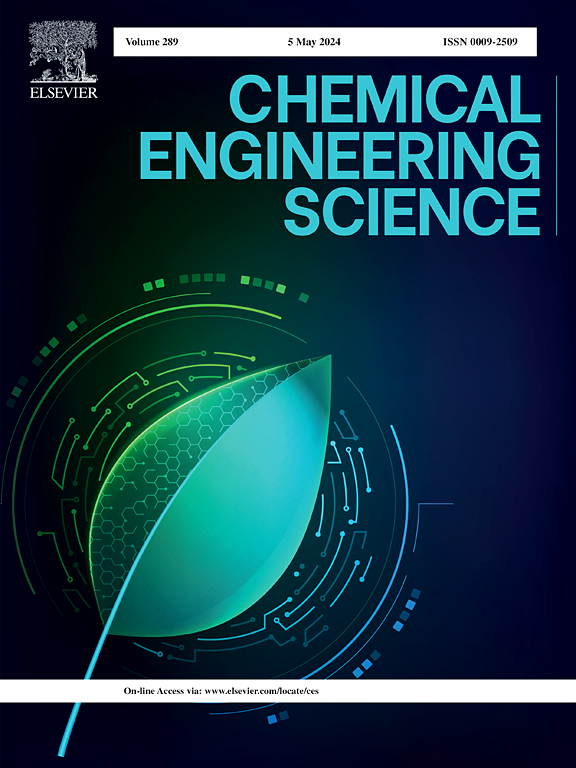乙烷脱氢催化性能的调整:金属二聚体组成对n掺杂石墨烯负载双原子催化剂的影响
IF 4.3
2区 工程技术
Q2 ENGINEERING, CHEMICAL
引用次数: 0
摘要
乙烷直接脱氢(EDH)制乙烯受到深度脱氢生成焦炭和C-C键裂解导致的催化剂失活的阻碍。锚定在n掺杂石墨烯(M1M2-NC)上的双原子催化剂(dac)提供了可调的活性位点来解决这一挑战。结合DFT计算、AIMD和kMC模拟,本工作系统地探索了15种M1M2-NC催化剂的EDH机制,以获得现实条件下最合适的双原子金属组合。结果表明,CHx*为焦炭前体,简化了反应途径,加快了催化剂的筛选;在实际条件下(873.15 K, 0.2 bar C2H6), RuCo-NC的催化性能优于工业Pt3Sn和单金属Pt,具有最佳的催化性能;C2H4产率与C2H5*结合强度之间存在火山型相关性,证明C2H5*结合强度是有效的活动性描述符。这种多尺度计算框架为合理设计抗焦EDH催化剂提供了原子水平的指导。本文章由计算机程序翻译,如有差异,请以英文原文为准。


Tuning catalytic performance in ethane hehydrogenation: Metal dimer composition effects on N-doped graphene-supported dual-atom catalysts
Ethylene production via ethane direct dehydrogenation (EDH) is hindered by catalyst deactivation due to coke formation from deep dehydrogenation and C–C bond cleavage. Dual-atom catalysts (DACs) anchored on N-doped graphene (M1M2-NC) offer tunable active sites to address this challenge. Combining DFT calculations, AIMD and kMC simulations, this work systematically explores EDH mechanisms across 15 types of M1M2-NC catalysts to obtain the most suitable combination of diatomic metal under realistic conditions. The results indicate that CHx* species is identified as coke precursors, enabling a simplified reaction pathway to accelerate catalyst screening; RuCo-NC is screened out to outperform industrial Pt3Sn and monometallic Pt under realistic conditions (873.15 K, 0.2 bar C2H6) with the optimal catalytic performance; A volcano-type correlation emerges between C2H4 production rate and C2H5* binding strength, establishing the latter as an effective activity descriptor. This multiscale computational framework provides atomic-level guidelines for rational design of coke-resistant EDH catalysts.
求助全文
通过发布文献求助,成功后即可免费获取论文全文。
去求助
来源期刊

Chemical Engineering Science
工程技术-工程:化工
CiteScore
7.50
自引率
8.50%
发文量
1025
审稿时长
50 days
期刊介绍:
Chemical engineering enables the transformation of natural resources and energy into useful products for society. It draws on and applies natural sciences, mathematics and economics, and has developed fundamental engineering science that underpins the discipline.
Chemical Engineering Science (CES) has been publishing papers on the fundamentals of chemical engineering since 1951. CES is the platform where the most significant advances in the discipline have ever since been published. Chemical Engineering Science has accompanied and sustained chemical engineering through its development into the vibrant and broad scientific discipline it is today.
 求助内容:
求助内容: 应助结果提醒方式:
应助结果提醒方式:


